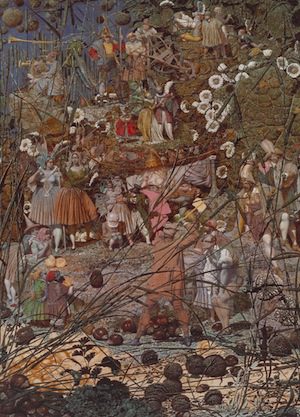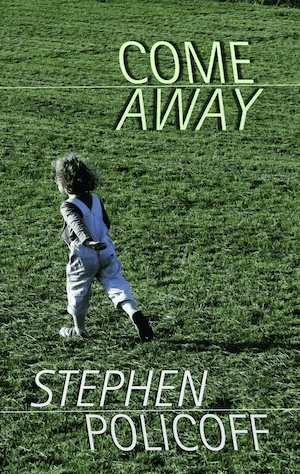
I shall be telling this with a sigh…
My long-delayed second novel, Come Away, is about to be published, and along with the usual mélange of emotions (love it! hate every word of it! want to kiss the cover! want to slink away from the very sight of it!), I cannot escape the intertwining of sorrow/amazement I experience when I think about how it lurched—and almost did not make it—into this world.
The story begins long ago, in 1999, when my then-four year old daughter Anna had a minor accident that should not have—but did—cause massive intracranial bleeding. The hospital bureaucrats refused to believe this could occur merely from Anna rolling off our bed in the middle of the night. They badgered us, insinuated monstrous acts, until my wife Kate, as strong a person as I have ever known, burst into tears, and I threatened legal action (though we didn’t have a lawyer).
Seven months and seven doctors later, Anna was diagnosed with the dreadful, progressive neurogenetic disorder Niemann-Pick C (which, among many terrible symptoms, occasionally causes effusive bleeding where none would be expected).
Although Anna remained for many years as happy and sweet a child as has ever lived, the sadness that swept over us then cannot be measured. It sent us in various directions, looking for ways to soothe our souls. Kate buried herself in work. We began the process to adopt our second daughter, Jane. I began a second novel (the first one, Beautiful Somewhere Else, was then still bouncing around, seeking a home).
Because I don’t like to read fiction while I am trying to write it, and for various inchoate reasons—solace? inspiration?—I also started re-reading poems which had once moved or shaken me. I always had a thing for Yeats, and when I looked again at his famous poem “The Stolen Child,” especially its plangent choral cry, For the world’s more full of weeping than you can understand, I could barely speak for hours. I knew that phrase would haunt me for a long time, knew I wanted to use it in something.
Then I forgot about it.
A few years later, I was talking to a neighbor about our special-needs kids. He told me, so casually it gave me a chill, that when his son was diagnosed with autism, he felt as if his beautiful boy had been spirited away and replaced with a changeling child.
I was intrigued by that idea. It was not that I thought of Anna as a changeling, but I began to wonder if the creepy lore of the changeling—the healthy kid whisked away by fairies and replaced with a withered husk—might not be some kind of folktale explanation for ill and disabled children. (It turns out that others have had this thought, and some research exists to support such an idea.)
 As I began to research these dark tales, I was reminded of another earlier enthusiasm: the mid-Victorian British craze for fairy paintings, especially the extraordinary works of the mad artist Richard Dadd, who killed his father and spent most of his life in the infamous Bedlam, painting obsessive, Bosch-like scenes from his teeming unconscious. His masterpiece, “The Fairy Feller’s Master-Stroke,” which hangs in the Tate Gallery in London, caught my eye in college when I was perusing a book about outsider art.
As I began to research these dark tales, I was reminded of another earlier enthusiasm: the mid-Victorian British craze for fairy paintings, especially the extraordinary works of the mad artist Richard Dadd, who killed his father and spent most of his life in the infamous Bedlam, painting obsessive, Bosch-like scenes from his teeming unconscious. His masterpiece, “The Fairy Feller’s Master-Stroke,” which hangs in the Tate Gallery in London, caught my eye in college when I was perusing a book about outsider art.
When I looked at it again, it somehow echoed the idea of a secret world swarming with creatures we cannot discern, creatures who are not the benign fairies of Disney confections, but might decide on a whim to whisk your child away and replace her with a shriveled joke of a child.
All this while, I had been working desultorily on my second novel, but I was frustrated by it. I was focusing more on the sinister green creatures in Dadd’s painting than on the stalled progress of my book.
Possibly as a way of procrastinating work on the book I was supposed to be working on, I began to imagine writing a companion piece to my first novel, Beautiful Somewhere Else. Although BSE was largely ignored by press and public alike, the handful of people who did like it seemed especially intrigued by the interweaving of mordant domestic comedy with inexplicable events (alien abduction, mostly). I wondered if maybe I was not done with this kind of interweaving, nor with that novel’s characters (the anxious narrator Paul, his young and optimistic wife Nadia, Nadia’s New Age philosopher father, Dr. Maire).
But all my musings felt useless in the face of Anna’s increasingly dodgy health. At 12, she had begun having seizures, could no longer run or even walk without assistance. My sweet little girl was often sad now, and seemed lost, as lost as I often felt. I began to have recurring nightmares about her. They are classic anxiety dreams: Anna is lost in a forest, she is calling out for me, crying and begging me to find her, and I can’t, I am lost too, or can’t move, or can’t see.
When I confided my dreams and my encroaching dread about Anna’s life to one of my colleagues, she said, “That’s the novel you should be writing.” It was as if a key had been turned in a lock. I started to sketch it out almost immediately, giving those dreams to the narrator Paul.
But my work feels most resonant to me when I am writing about something beyond my own deep well of fears. And I’ve always been drawn to the supernatural—not as a belief system but as a metaphor for all we can’t comprehend about our lives. As Woody Allen observes, “There is no question that there is an unseen world. The problem is, how far is it from midtown and how late is it open?”
The fear that your child might be taken from you—every parent’s nightmare, I guess—flowed smoothly (in my mind anyway) into the fear that your child might be beguiled into another world, like the children led by the Pied Piper into the mountain. I started picking at that idea, as one does with a scab.
Around this time, I read a review of some book about weird unsolved mysteries, and came upon the legend of the Green Children of Woolpit—a green-ish boy and girl who appeared in a medieval English village, claiming to have wandered there from a world inside our world. I feverishly scribbled this down (though it was on a napkin, which I promptly lost), and on a weekend walk through the verdant fields near our house in Phoenicia, New York, I suddenly pictured children—my children—dancing through a woodsy maze, following an ominous green child to some other world.
That’s how I began to write this novel, and it proceeded in fits and starts like everything else in my life. In early 2012, my beloved wife Kate was diagnosed with cancer. She spent a horrifying 6 weeks in New York hospital hell while I dashed back and forth from home to  office to hospital, trying to take care of my wife, my kids, my teaching, afraid to think about the future, about much of anything really. I could not bear to write while I was in that state; I glowered at my useless words. One morning, before I began my mad dash from classes to ICU, I thought again of the Yeats poem. I scribbled in my journal the first words of the chorus: Come away.
office to hospital, trying to take care of my wife, my kids, my teaching, afraid to think about the future, about much of anything really. I could not bear to write while I was in that state; I glowered at my useless words. One morning, before I began my mad dash from classes to ICU, I thought again of the Yeats poem. I scribbled in my journal the first words of the chorus: Come away.
Oh, I thought, that’s the title of my book.
So, now it was a book; a book that needed to be written.
I began to work on it again, and for the next 6 weeks, the only relief from my fear and pain was working on Come Away because it was both about my own impending despair and totally not about that. Working on it was like going into a trance—and I have always been attracted to a good trance.
I finished the first draft on the morning of the day Kate died, in March 2012. I did not know, of course, it would be the day she died, only that I had already lost her and needed to work hard to keep from losing myself. For several months after she died, I did not look at the manuscript—there was too much to do, too many sad loose ends of our life together to tie up. During the fall of 2012, I took the semester off from teaching; instead of working on a project I had planned to work on, I went back to Come Away. I liked/hated it, the way I always do with anything I’ve written. I revised it and, on a whim, sent it to Dzanc Books, which was holding a competition for a Mid-Career Author Award. It won the award.
Various friends of mine have said, “Kate got you that award.” Maybe she did.
Anna’s health continues to tumble. My younger daughter Jane is now in high school. When she heard that I had won a Mid-Career Award, she said, “Gee, Daddy, if this is your mid-career, you’re going to be really old when it’s over.”
When I flip through Come Away now, I try not to sigh. I try to focus on the dark humor, the offbeat images, which might, I hope, bring pleasure to some readers. But as I stare at the cover—a tiny detail from Dadd’s painting—I sometimes catch myself murmuring, “The world’s more full of weeping than you can understand.”




